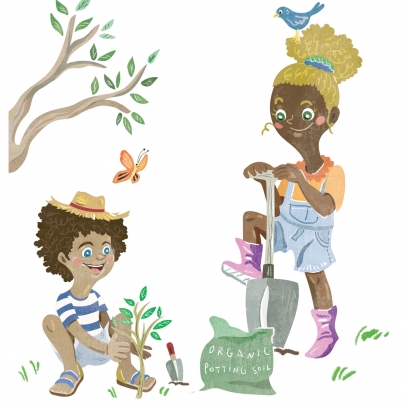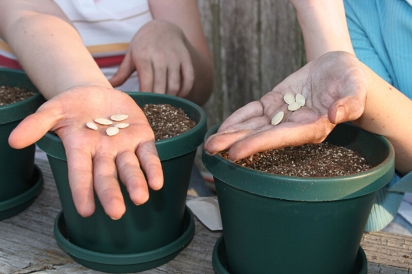What Do We Grow?
Our subtropical climate in South Florida means we get to enjoy many fruits and vegetables year-round. In the winter and early spring, farmers in the Redland and Homestead area grow vegetables like beans, tomatoes, greens, cucumbers, squash, kale, eggplant, beets and carrots. Much of this produce is shipped to feed people in other parts of the United States, where it’s too cold to grow these crops during winter months. Florida also grows citrus, avocado, starfruit, mamey sapote and other tropical fruits in winter and spring.
Crops like okra, peppers and calabaza do well in South Florida’s summer heat. So do fruits like mangos, jackfruit, lychee, longan, dragonfruit, watermelon and breadfruit.
When you eat local produce — fruits and vegetables grown right here in South Florida — you’re getting fruits and veggies that didn’t travel a long distance to get here, so they’re fresh and tasty. Shop for local fruits and veggies at farmers markets and farmstands in the agricultural district.
And it’s easy to grow your own vegetables at home. All you need is a sunny spot outside. You can grow in pots or built-up areas called raised beds. When you eat something you grew yourself, it tastes extra delicious!
What's in Season in South Florida?
These fruits and veggies are harvested here during these seasons:
Winter: Greens, beets, broccoli, cabbage, carrots, chard, beans, eggplant, peppers, tomatoes, winter squash, avocado, citrus, mulberries, strawberries, turmeric, canistel, passionfruit, caimito
Spring: Greens, corn, cucumbers, eggplant, zucchini, yellow squash, green jackfruit, lychee, mango, pineapple
Summer: Kale, calabaza, eggplant, hot peppers, callaloo, okra, collards, longan, canistel, sapodilla, avocado, carambola
Fall: Squash blossom, sweet potato, yuca, Seminole pumpkin, okra, mamey sapote
Year-round: Guava, bananas/plantains, coconut, papaya
Plant Your Own
WHAT YOU NEED: Paper cups, potting soil, seeds (lettuce or greens, beans, peppers, squash and sunflowers are good choices), spray bottle for water.
WHAT TO DO: Place soil in cups. Put seed in each cup (sprinkle lettuce seeds) and cover lightly with soil, then mist with water. Keep in a sunny location, misting so the soil doesn’t get dry. Soon you’ll see tiny seedlings popping up. When they grow 6" tall, you can transplant them into larger pots outside. Make sure your seedlings are watered regularly.
You can harvest your lettuce or greens by cutting off leaves. Wash under water, dry leaves with paper towels and eat!
You can re-grow scallions, also known as green onions! After using the green part, place the roots in a small jar of water. Keep the jar filled with water in a sunny place. Soon, the green tops will start growing back. Cut them off with scissors when you’re ready to use.







